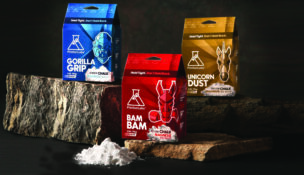Sure, hemp is cannabis ― but it’s no marijuana
This ditch weed became a super crop in three years
John Garvey //January 24, 2017//


Sure, hemp is cannabis ― but it’s no marijuana
This ditch weed became a super crop in three years
John Garvey //January 24, 2017//

There’s nothing “naughty” about it. Colorado farmers just harvested the third legal hemp crop. Although there’s been a steep learning curve, growers benefit from hemp’s naturally drought- and pest-resistant properties, high margins and the support of state lawmakers.
Yeah, it’s cannabis, but hemp is not the same as its close relative, marijuana. Less celebrated, hemp has thousands of uses – just not getting high.
“It’s the same plant, but humans have chosen to do different things with it,” explains Rich Becks, CEO of Chimney Rock Farms. “We now have varieties that are non-psychoactive … and can express some of those useful features like food, fiber, shelter, but can also provide some value in terms of relieving stress and inflammation.”
Although environmental stewardship is a major theme in the hemp industry, Chimney Rock Farms sets itself apart with its no-till farming methods and passive solar greenhouses. A monument to energy efficiency, the buildings require less than 25 percent the electricity per square foot as conventional designs. “The cheapest barrel of oil is the one you don’t burn,” Becks says.
Becks hopes to see hemp remain genetically diverse and processing decentralized as the industry matures. Hemp extracts have known medicinal properties, and most of the revenue from hemp is coming from the CBD market. Cannabidiol (CBD) is one of dozens of chemicals unique to the cannabis family and highly sought-after for certain medicinal attributes.
At the cutting edge of hemp research, Boulder-based CBDRx is engaged in several medical efficacy studies with American universities and Israeli researchers. The company aspires to breed a plant of unmatched quality and versatility, certify it through the Association of Official Seed Carrying Agencies (AOSCA) and license the seed.
“CBD is just the tip of the iceberg,” says CEO Tim Gordon. “You can’t find anything [in international markets] that’s over 9 percent CBD. If I can bring something that’s 12 to 15 percent and produce a lot of seed and is grown best in the Corn Belt of the United States … that’s my goal.”
Colorado’s hemp industry first-mover advantage will endure for years with regard to both research and revenues.
Adams State University in Alamosa is also working to facilitate the growth of the hemp industry by partnering with growers for market research. The school is also working with local leaders to recruit/develop a hemp processing facility.
“Adams State is helping to coordinate a private sector partnership around value-added agriculture,” says Beverlee McClure, president of Adams State. “Industrial hemp is an important component to this sector. It is unique that Adams State is positioned in the San Luis Valley and has the agricultural base in the valley as our classroom.”























